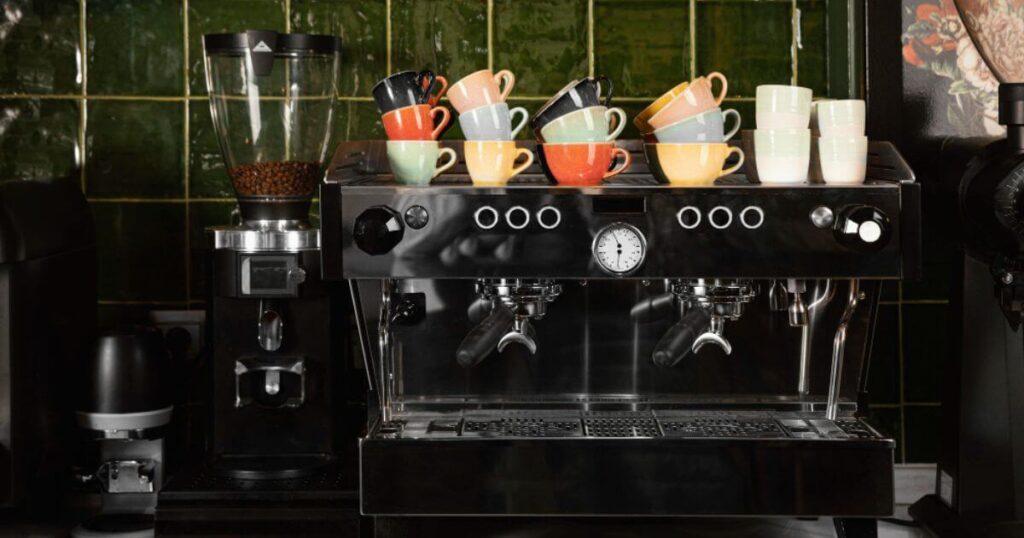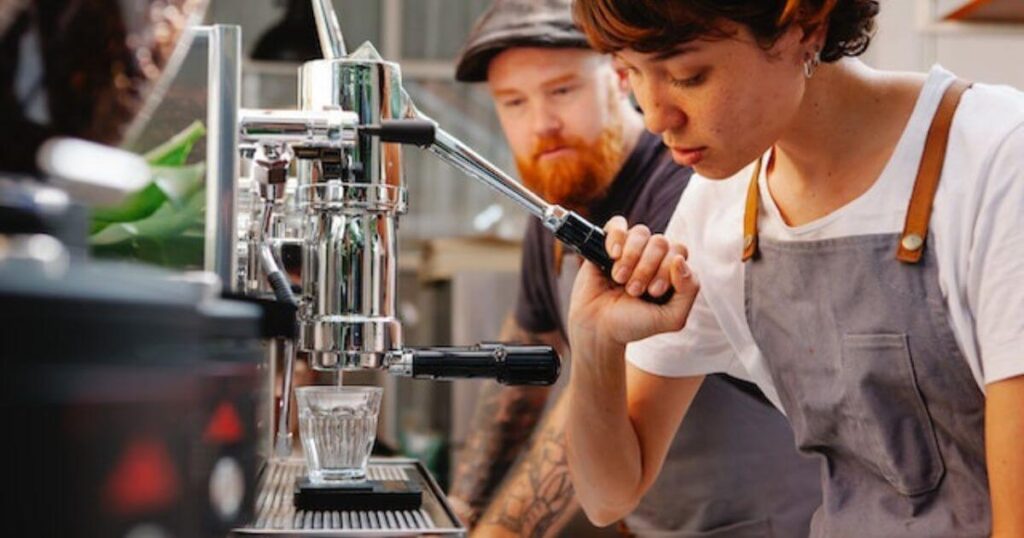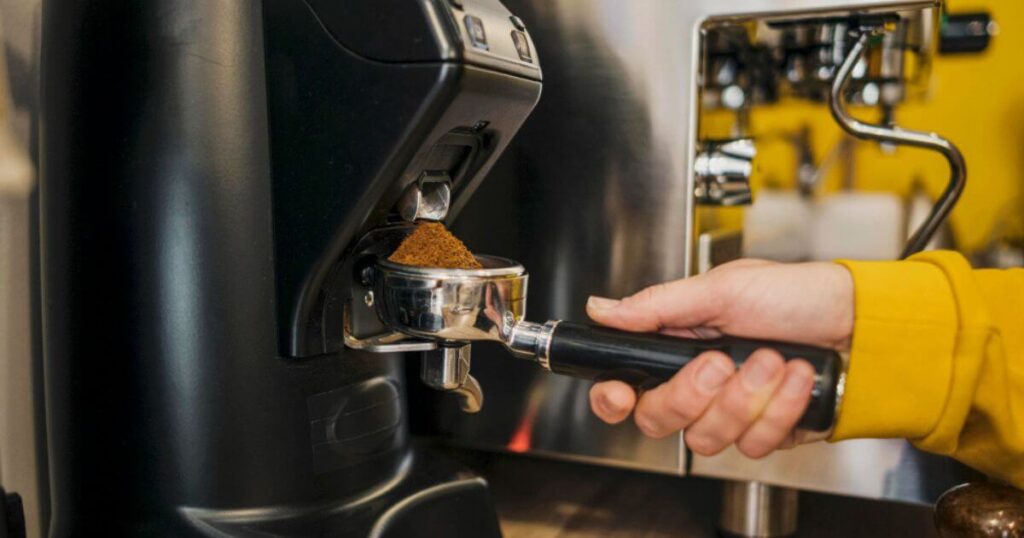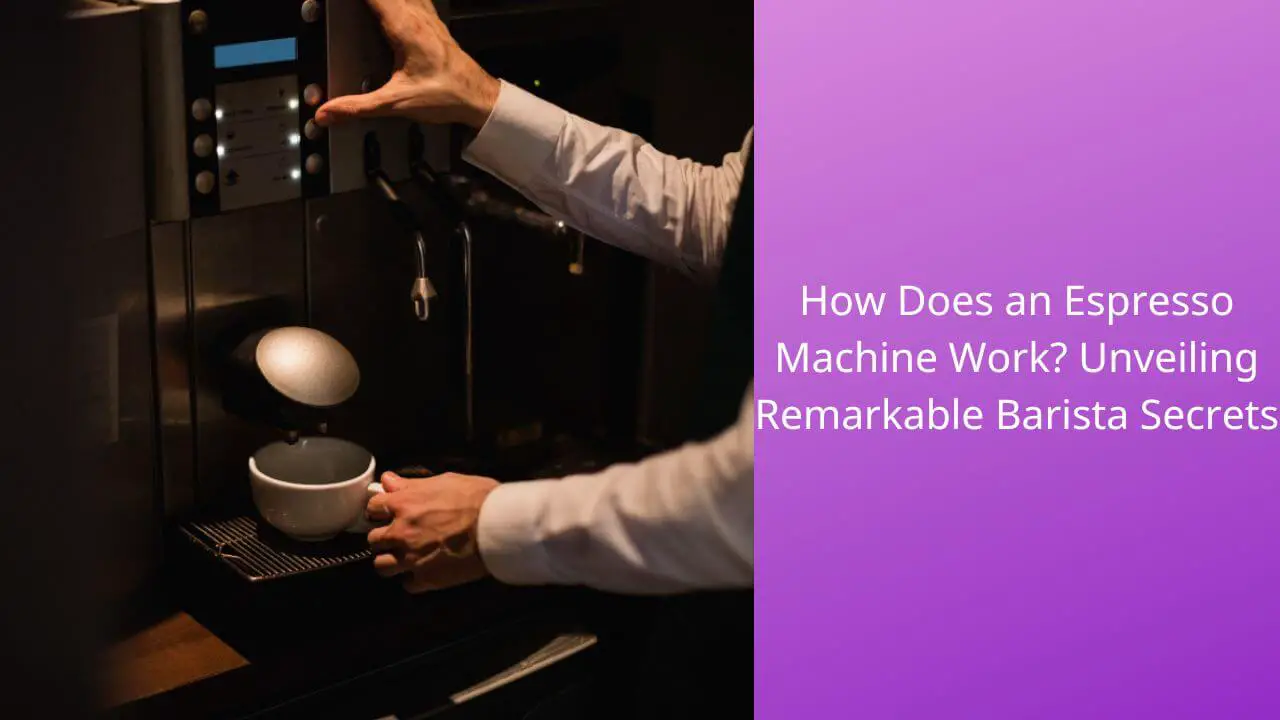How Does an Espresso Machine Work? Unveiling Remarkable Barista Secrets
Understanding the magic behind your daily caffeine jolt starts with one question: How does an espresso machine work? This complex yet fascinating kitchen appliance transforms simple coffee beans into a robust and flavorful shot of espresso, the base for numerous coffee drinks we enjoy daily.
This guide will delve into the inner workings of an espresso machine, demystifying the process that leads to the creation of your favorite morning wake-up call.
What is an Espresso Machine?

An espresso machine is a device that brews coffee by forcing hot water under high pressure through finely ground and compacted coffee beans. The Italian Luigi Bezzera invented the first commercial espresso machine in 1901, which revolutionized the way we drink coffee. Since then, various modifications have been made to enhance its performance, but the basic mechanisms remain unchanged.
How Does an Espresso Machine Work?

An espresso machine is a mechanical marvel that relies on a unique combination of pressure, heat, and precision to create the perfect cup of coffee. Whether you’re using a traditional manual espresso machine or a modern automatic one, they all operate on the same fundamental principles.
The Boiler and Heating Element
The first step in the brewing process is heating water to just below boiling point (between 195-205F). This is achieved by the boiler and heating element. The water stored in the boiler is heated by an electric coil or gas burner, depending on the type of machine. Once it reaches the desired temperature, a pump forces it out through pipes leading to the group head.
The Group Head
The group head is the part of the machine where the water is pressurized and combined with coffee grounds. It contains a porous filter basket, which holds tightly packed finely ground coffee. When hot water is forced through these grounds, it extracts the flavor compounds and oils from the beans, producing a concentrated liquid called ‘espresso.’ The group head may also include additional mechanisms to regulate pressure and temperature.
Portafilter
The portafilter is a handle-like attachment where the filter basket filled with coffee grounds is placed. It seals the group head and ensures that the pressurized water passes through the coffee evenly to extract a consistent flavor. Once the espresso shot is ready, it’s poured out of the bottom spout of the portafilter into a cup.
The Steam Wand
A steam wand is an important part of espresso machines that allows the barista to create steamed milk for drinks like cappuccinos and lattes. It operates by injecting pressurized steam into a container of cold milk, creating a microfoam with tiny bubbles that give the milk a creamy texture.
How Does a Lever Espresso Machine Work?

A lever espresso machine is a type of manual espresso machine that has a lever instead of an electric pump to create pressure. The process starts with the barista pulling down the lever, which lifts a piston inside the group head and creates pressure to force hot water through the coffee grounds.
This type of machine requires more skill and practice to master than other types, but many baristas believe it produces a superior espresso shot due to the level of control and precision it allows. It’s also considered a more traditional and authentic way of making espresso, as it was the original method used in the early days of espresso machines.
How Does a Manual Espresso Machine Work?

A manual espresso machine, also known as a lever or piston espresso machine, requires the user to manually control every brewing process step. This includes grinding and tamping the coffee grounds, pulling down on the lever to create pressure, and timing and stopping the extraction. It offers a level of precision and control that some baristas prefer over automatic machines, but it requires more skill and practice to master.
Frequently Asked Questions About How Does an Espresso Machine Work
How long does it take to brew an espresso shot with an espresso machine?
Can you adjust the pressure and temperature in an espresso machine?
What is the difference between a manual and an automatic espresso machine?
Can you make other drinks besides espresso with an espresso machine?
In Conclusion
An espresso machine is a sophisticated piece of equipment that combines science, function, and aesthetics to deliver a delicious cup of coffee. Its intricate mechanisms work together in perfect harmony to produce the exquisite flavor that espresso lovers crave.
Next time you take a sip of your favorite espresso drink, remember the complex journey it took to reach your cup. From bean selection to pressure regulation, every step plays an essential role in creating the perfect shot of espresso.
So let’s raise our cups to this mesmerizing machine and the art of crafting the perfect cup of coffee. Cheers!







